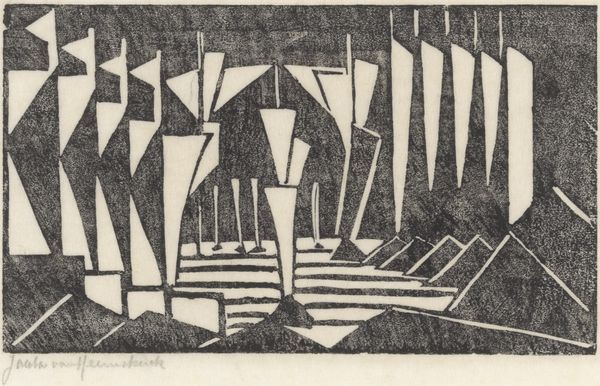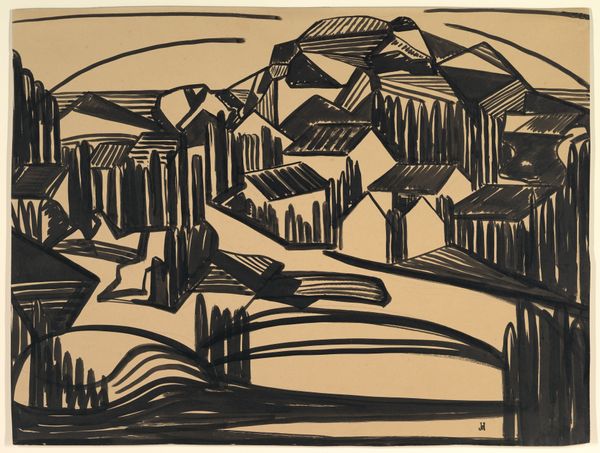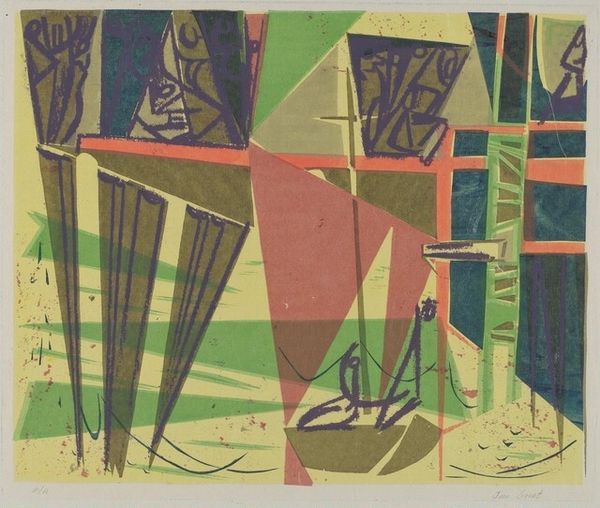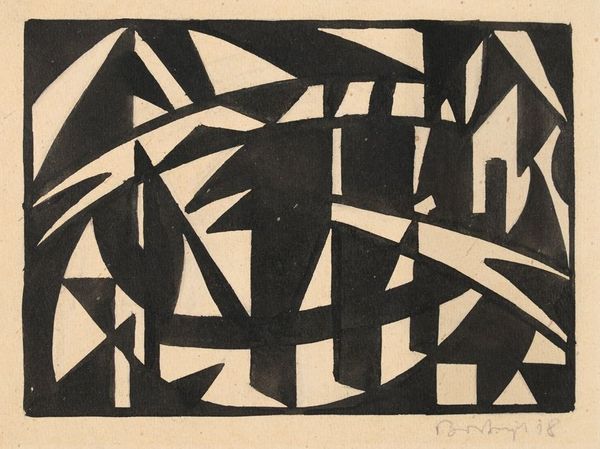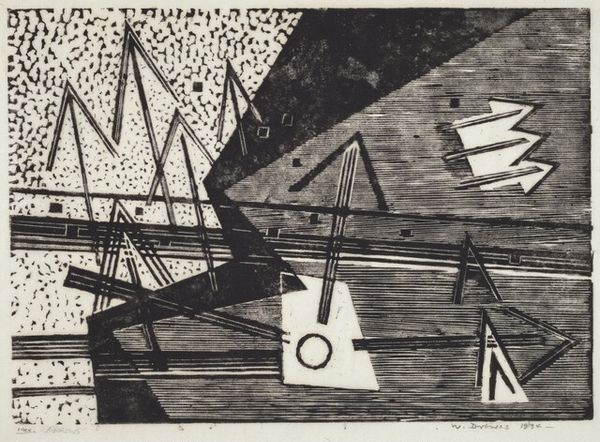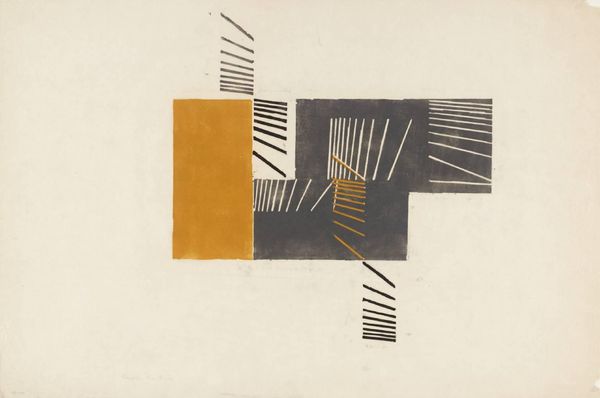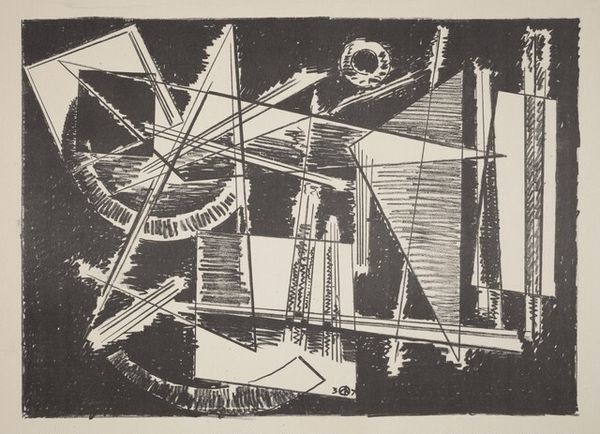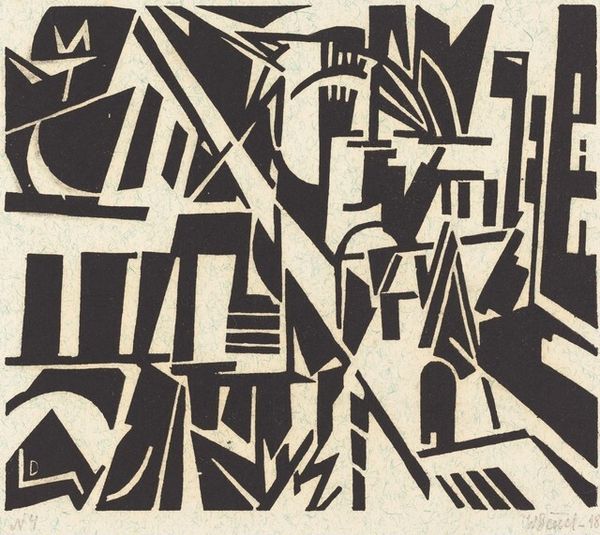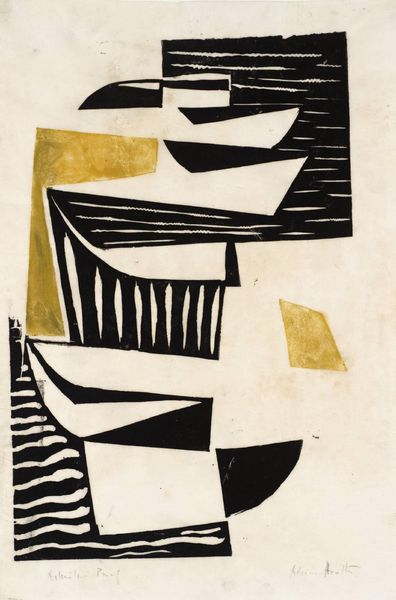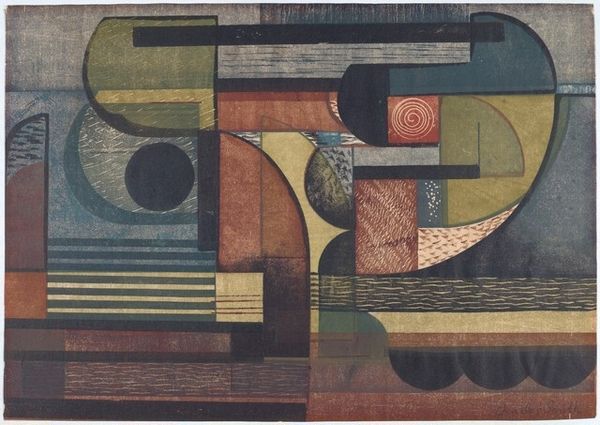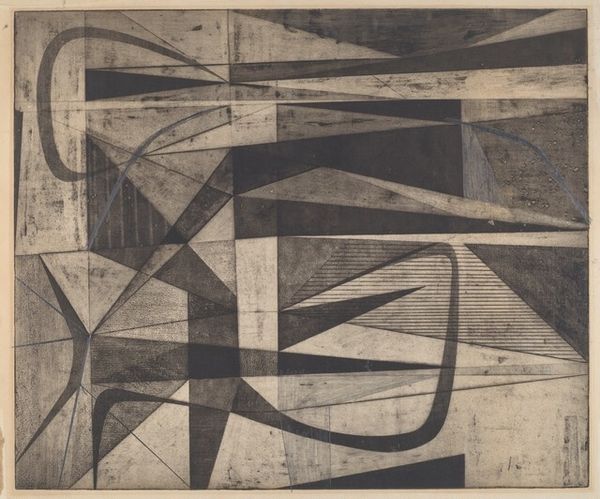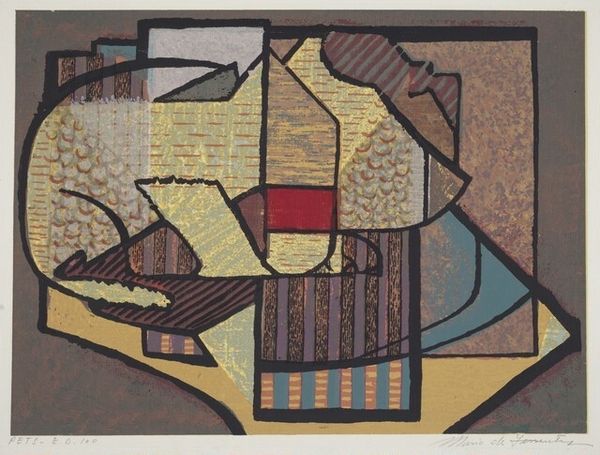
print, linocut, woodblock-print
# print
#
linocut
#
landscape
#
linocut print
#
woodblock-print
#
geometric
#
modernism
#
regionalism
Dimensions: image: 30 x 39 cm (11 13/16 x 15 3/8 in.) sheet (irregular): 36.7 x 45.3 cm (14 7/16 x 17 13/16 in.)
Copyright: National Gallery of Art: CC0 1.0
Editor: We’re looking at Frank Wallace's "Greensboro, Vt." from around 1945, a striking linocut print. I’m immediately struck by its almost harsh geometry, those strong lines dividing up the landscape. What’s your take on it? Curator: It’s more than just geometry; it’s a snapshot of rural America navigating a specific moment in time. Wallace made this right after World War II. I’d ask you to consider how this seemingly simple scene of Vermont engages with ideas about place, labor, and identity. Who is this "Vermont" for, and who gets to define it? Editor: That’s a great question! I was mostly focused on the aesthetics, the high contrast and flattened perspective. But thinking about the context, I guess it invites me to think about what images and stories were being circulated about American life, and maybe *who* was circulating them. Curator: Precisely. Consider Regionalism, which this piece flirts with. It romanticizes rural life but often overlooks the complexities of class, race, and gender in these communities. Is this picture a celebration, a critique, or something in between? Editor: I see what you mean. The starkness could be read as a critical view of rural life, pushing against a purely celebratory, uncomplicated reading. Curator: The linocut medium itself plays a role, too. It’s accessible, democratic. Was Wallace consciously choosing a medium that aligned with the ‘everyman’ he might be depicting? And how does the graphic style itself affect our understanding of place, making this very specific town feel flattened or homogenized? Editor: That really changes my perspective! I was just seeing the style as an aesthetic choice. Now I understand how those choices are linked to cultural narratives. Curator: Exactly. Art always operates within a complex web of social, political, and historical forces. Editor: So, seeing "Greensboro, VT" now is a reminder to look beyond the surface and to consider the broader narratives about place and identity that it both reflects and shapes. Thanks for sharing your insights. Curator: Indeed. Keep asking questions, always questioning, that is how we find meaning in the world and art that reflects it.
Comments
No comments
Be the first to comment and join the conversation on the ultimate creative platform.
